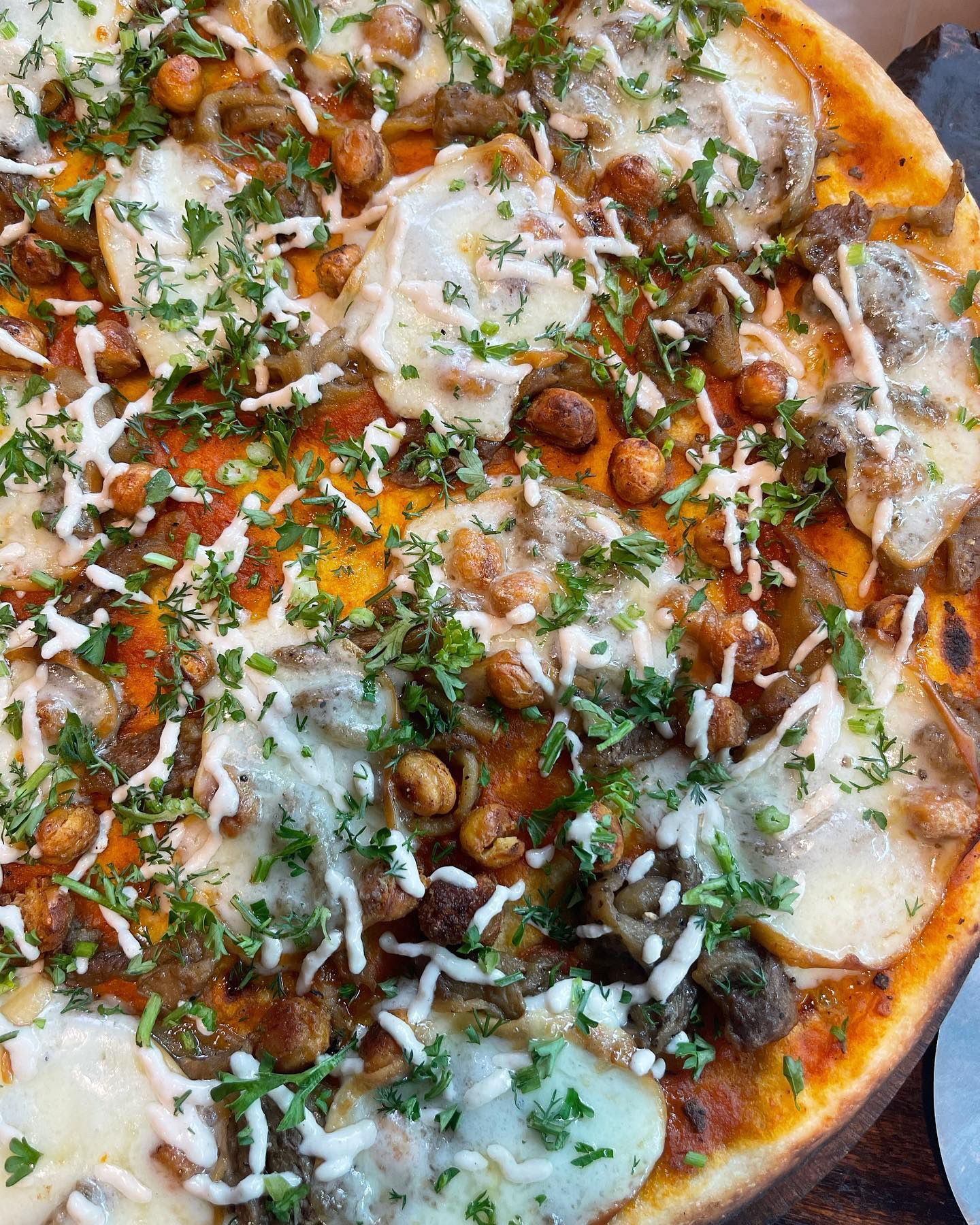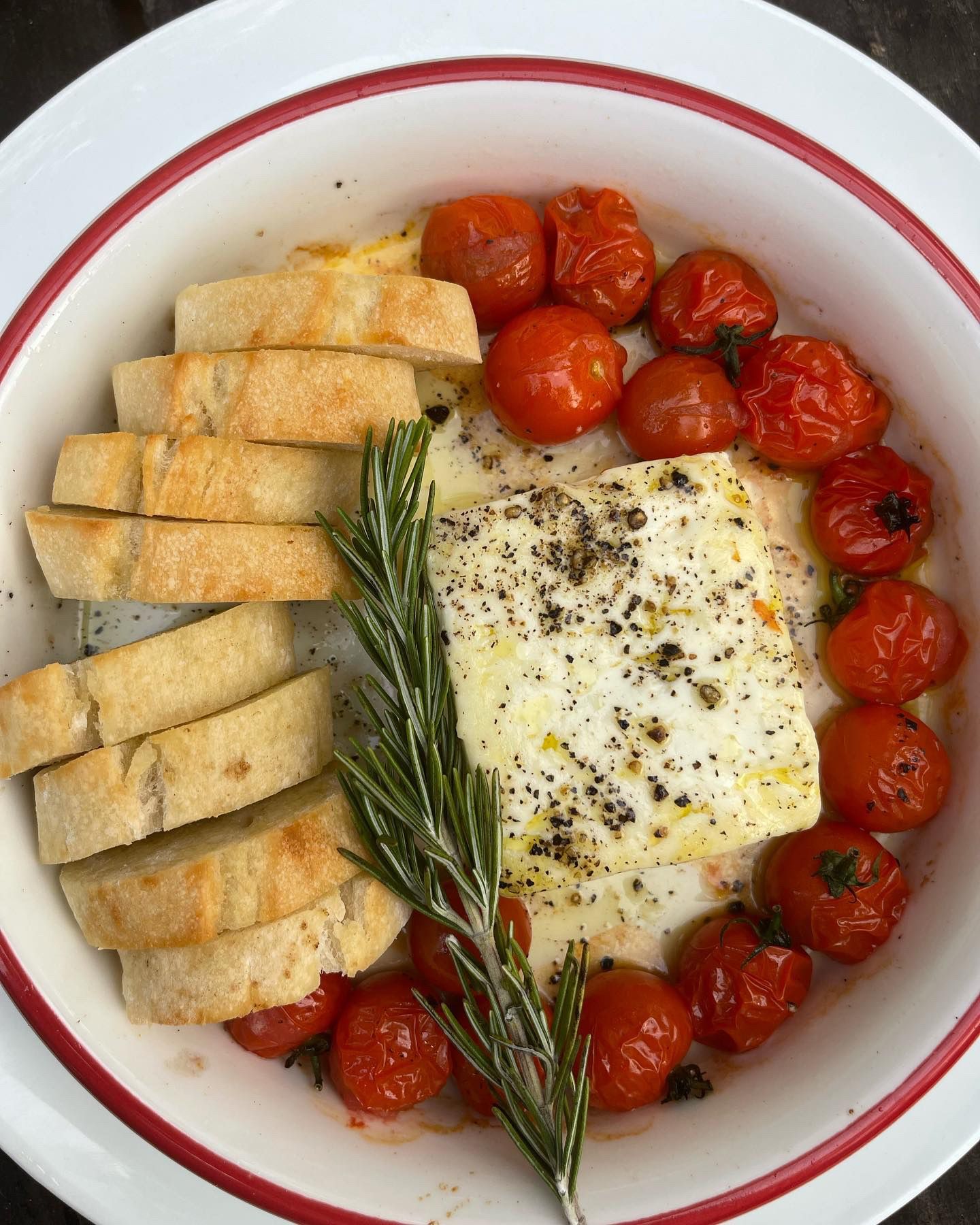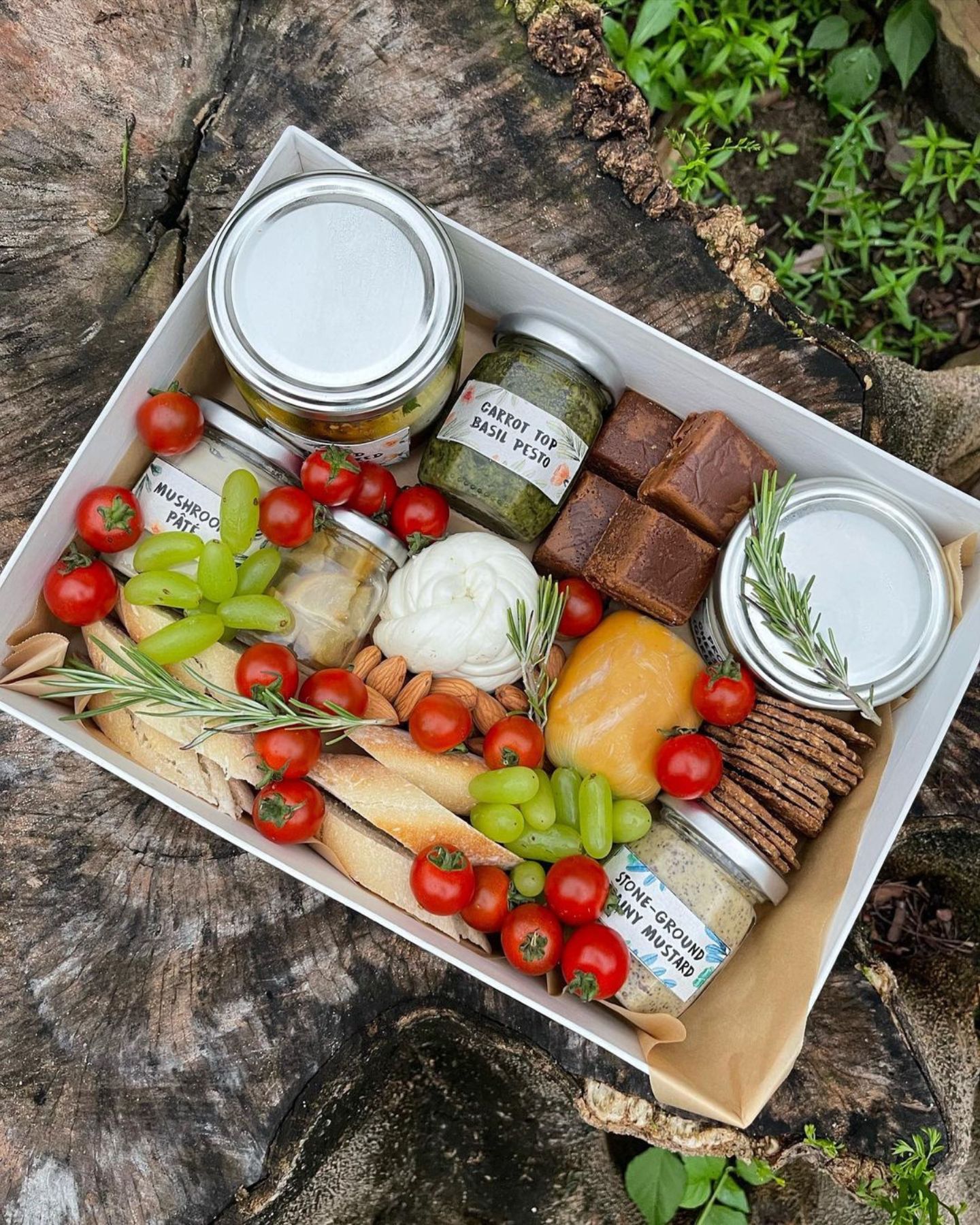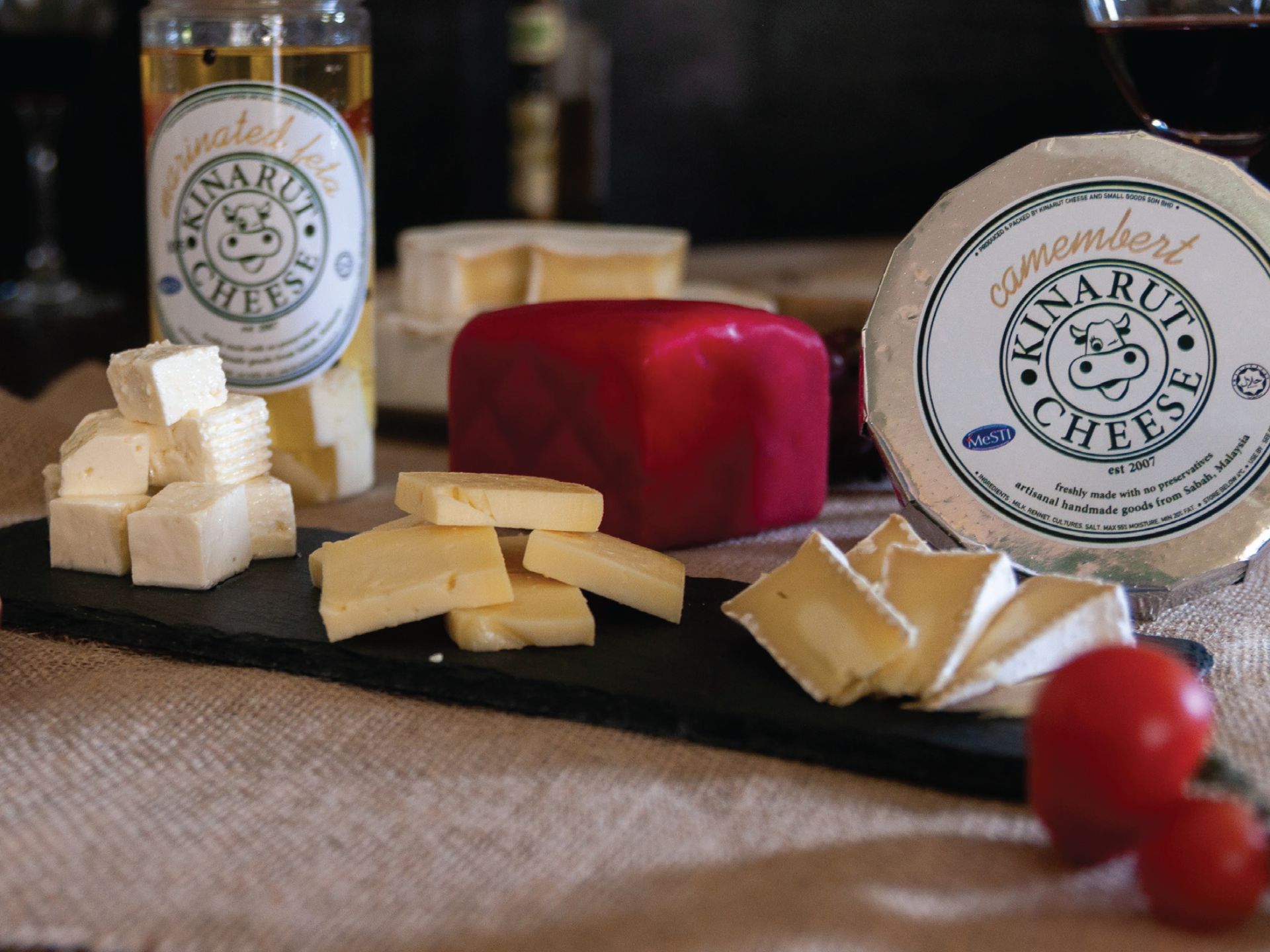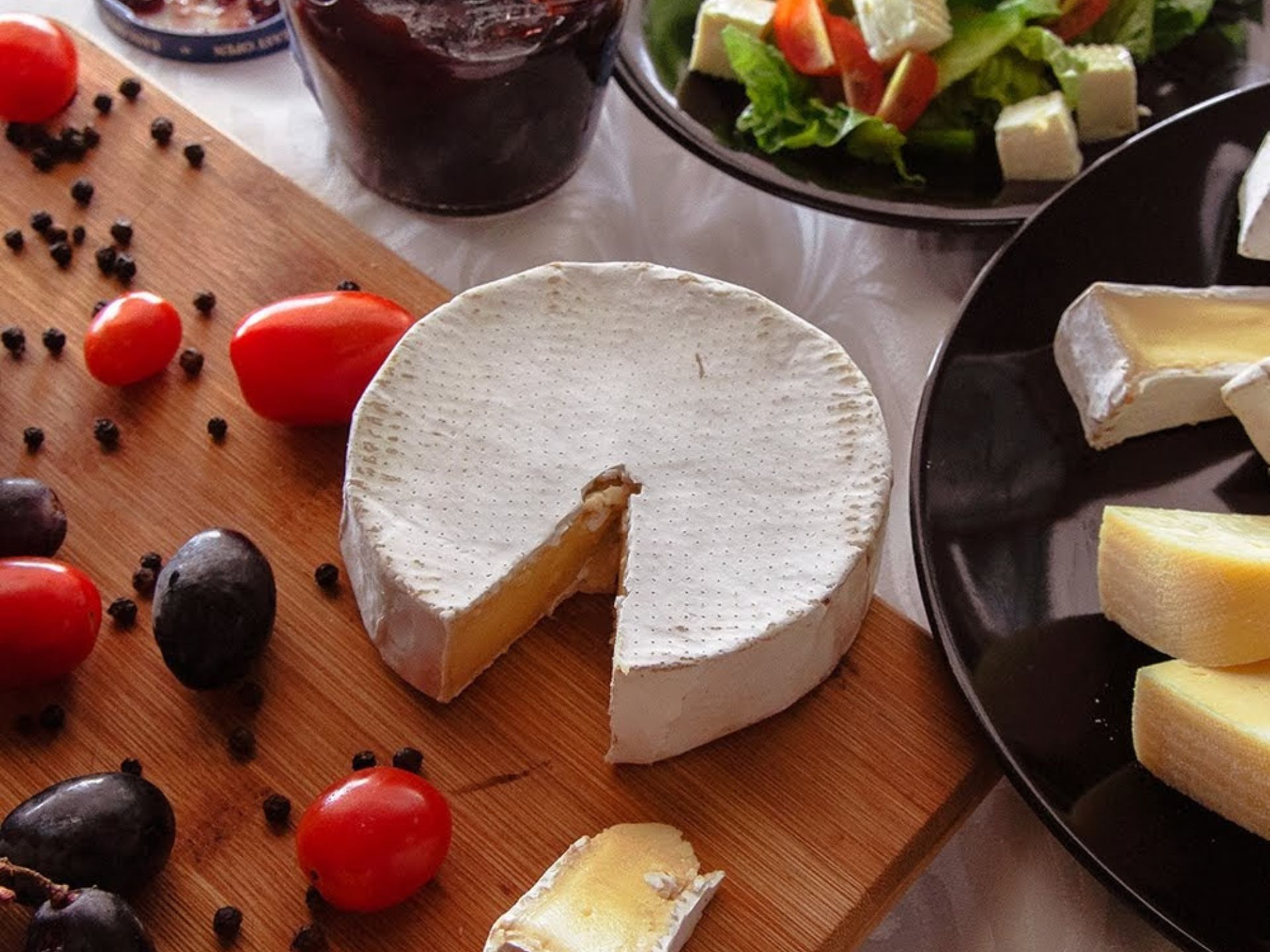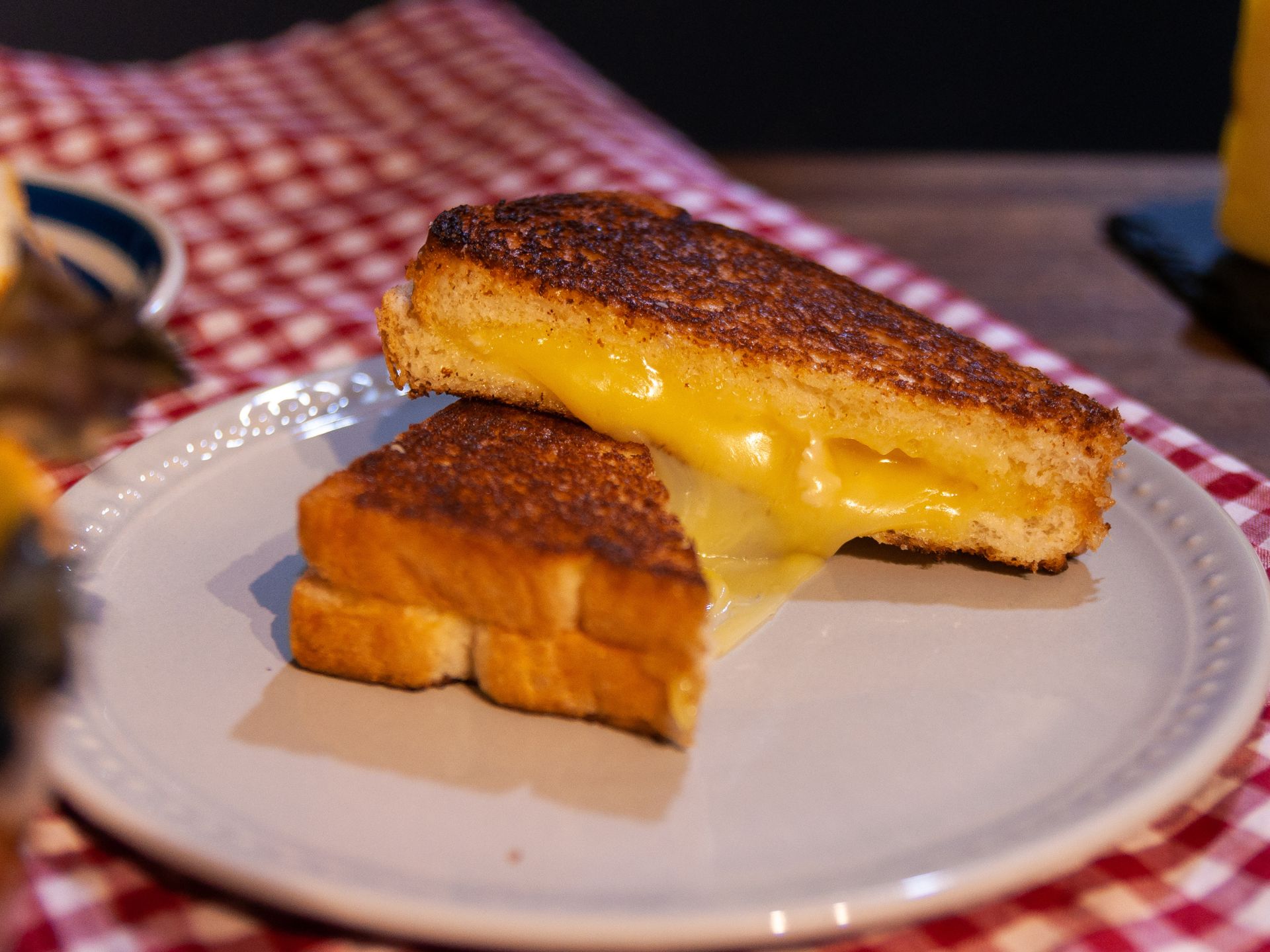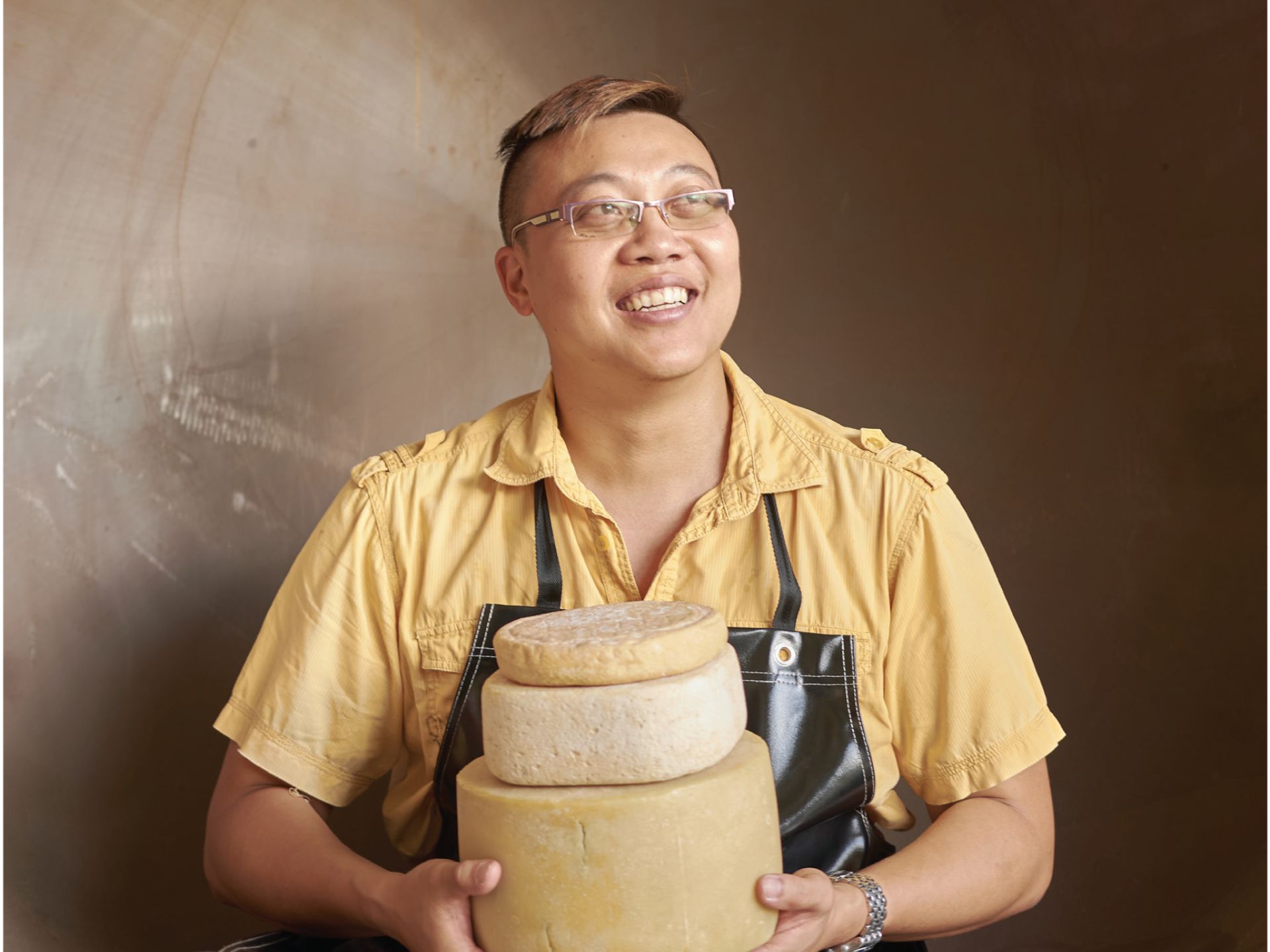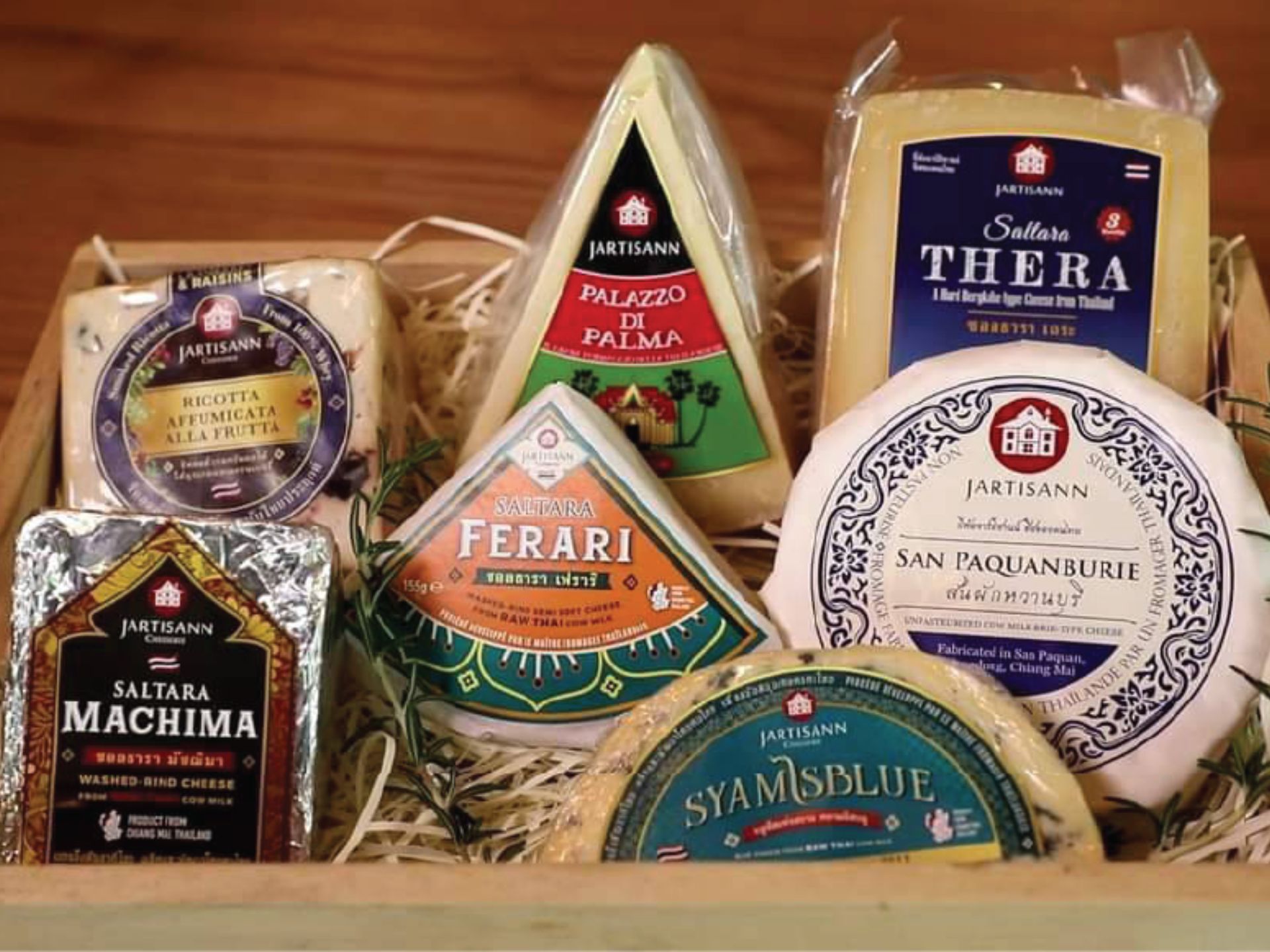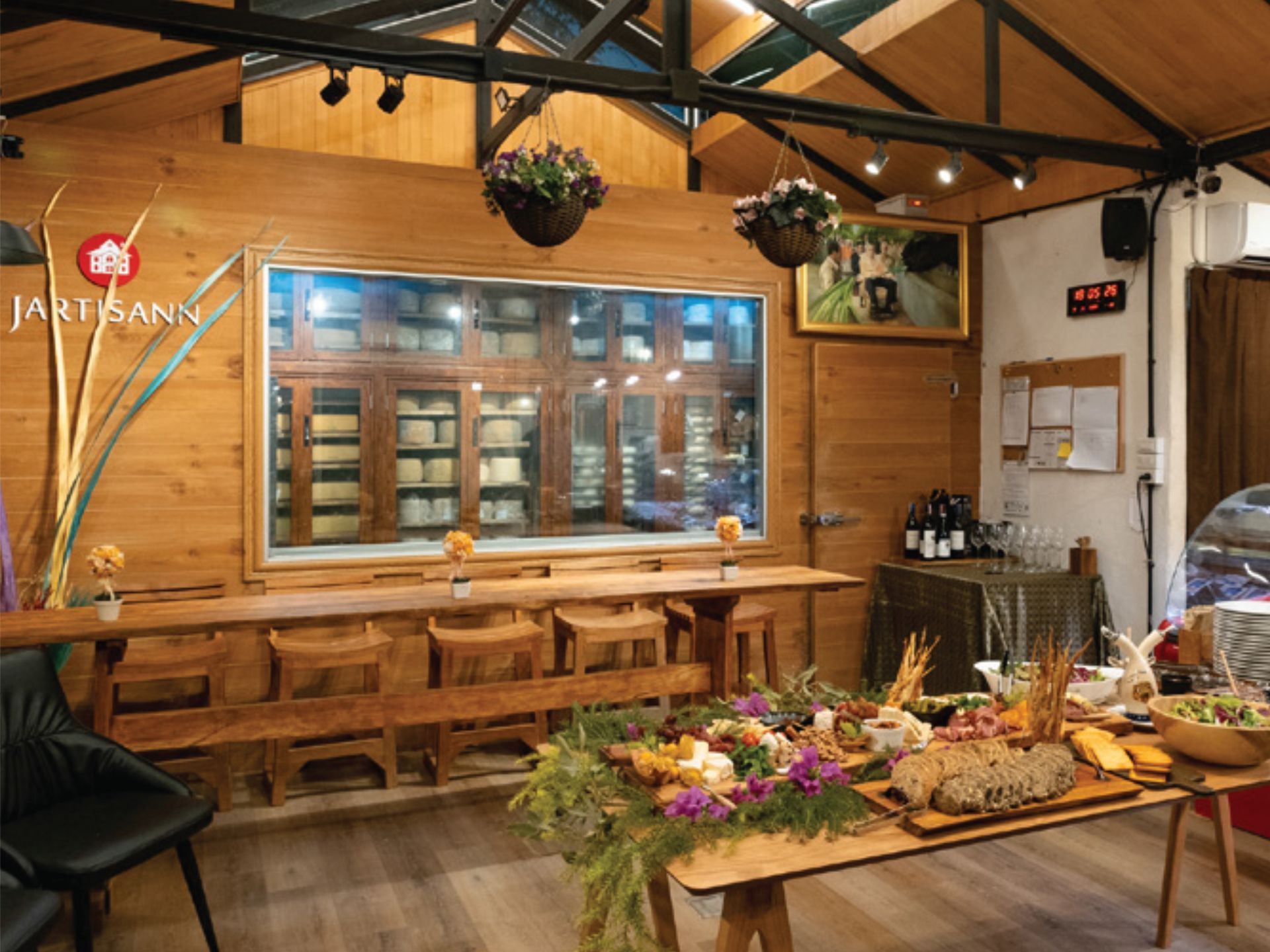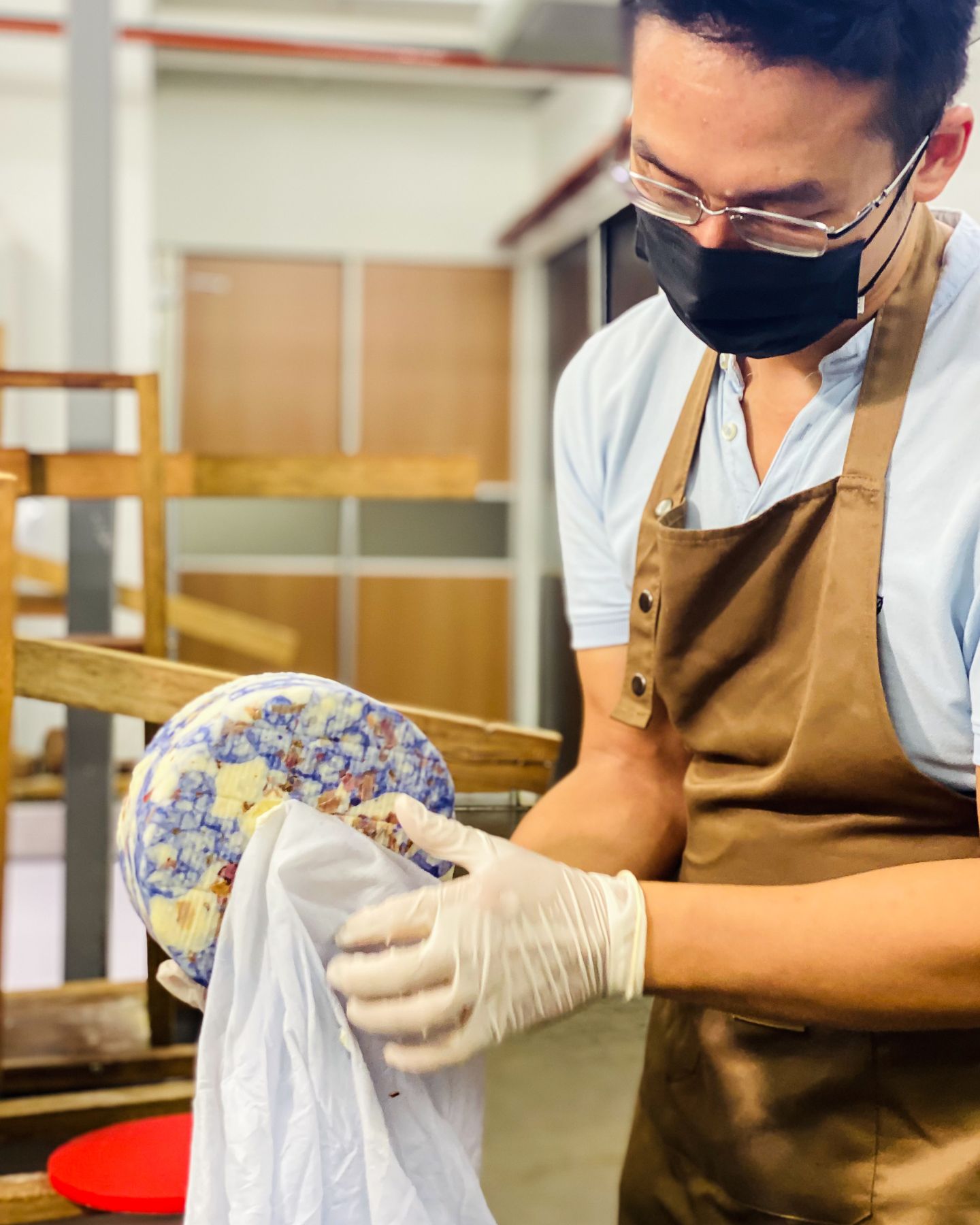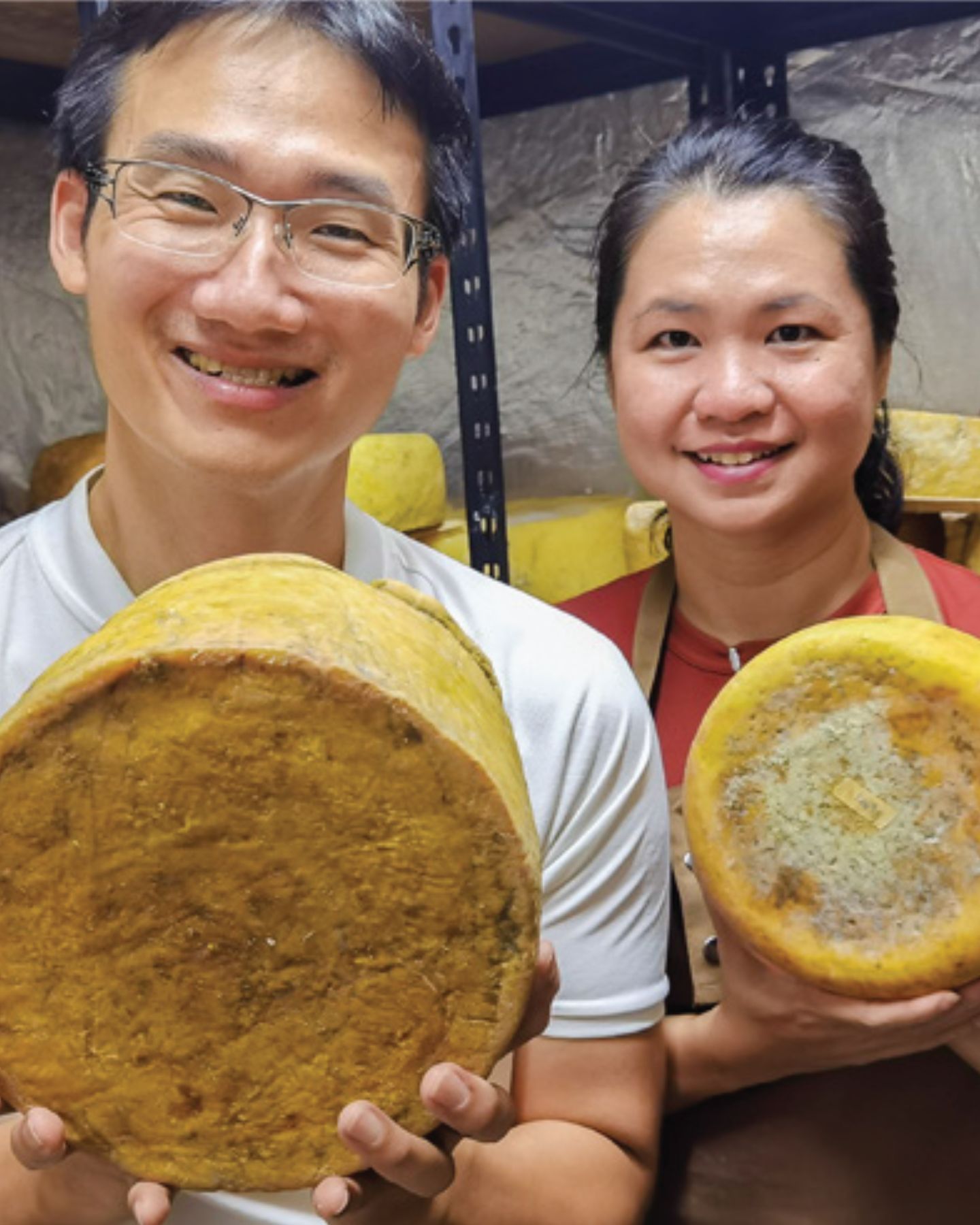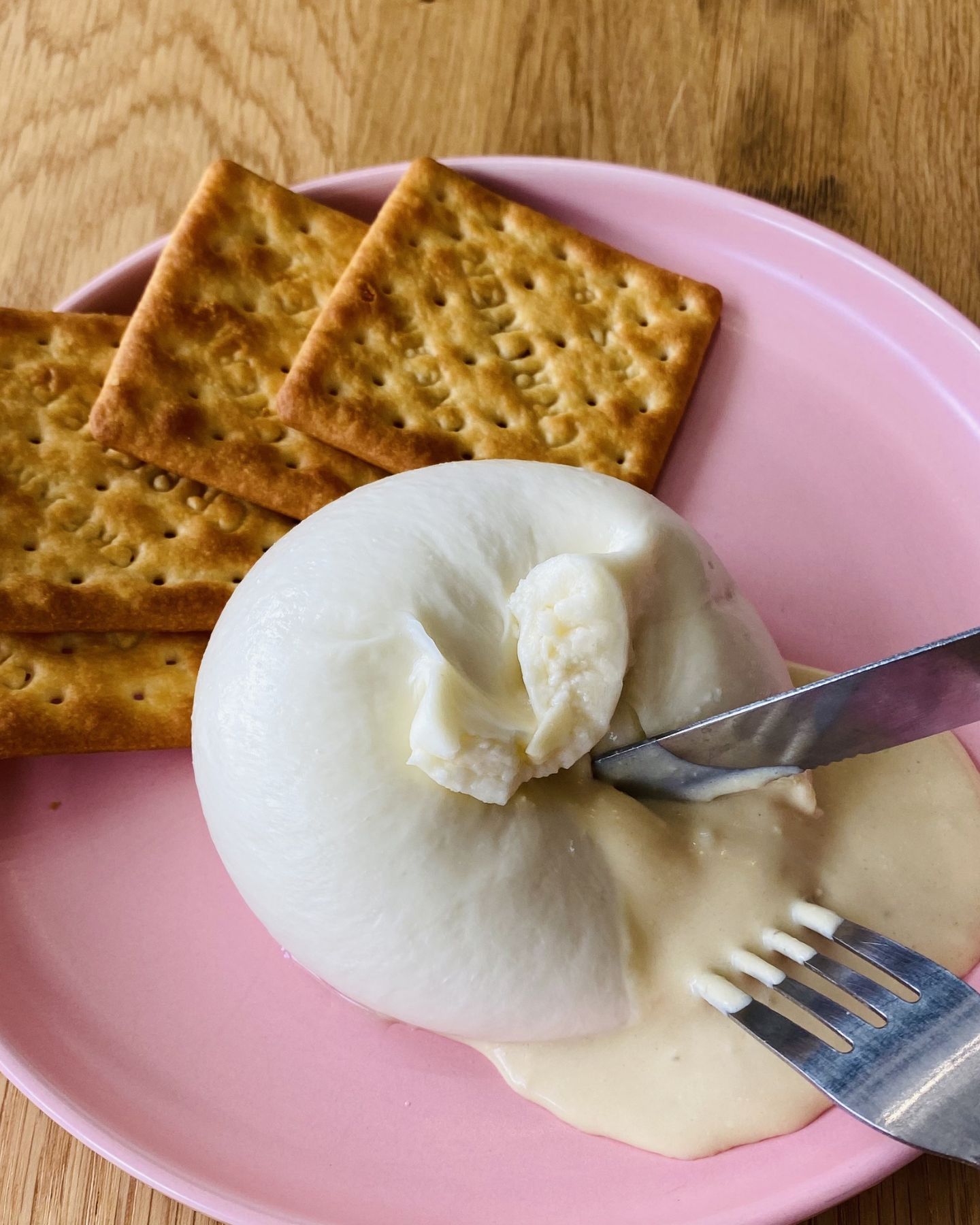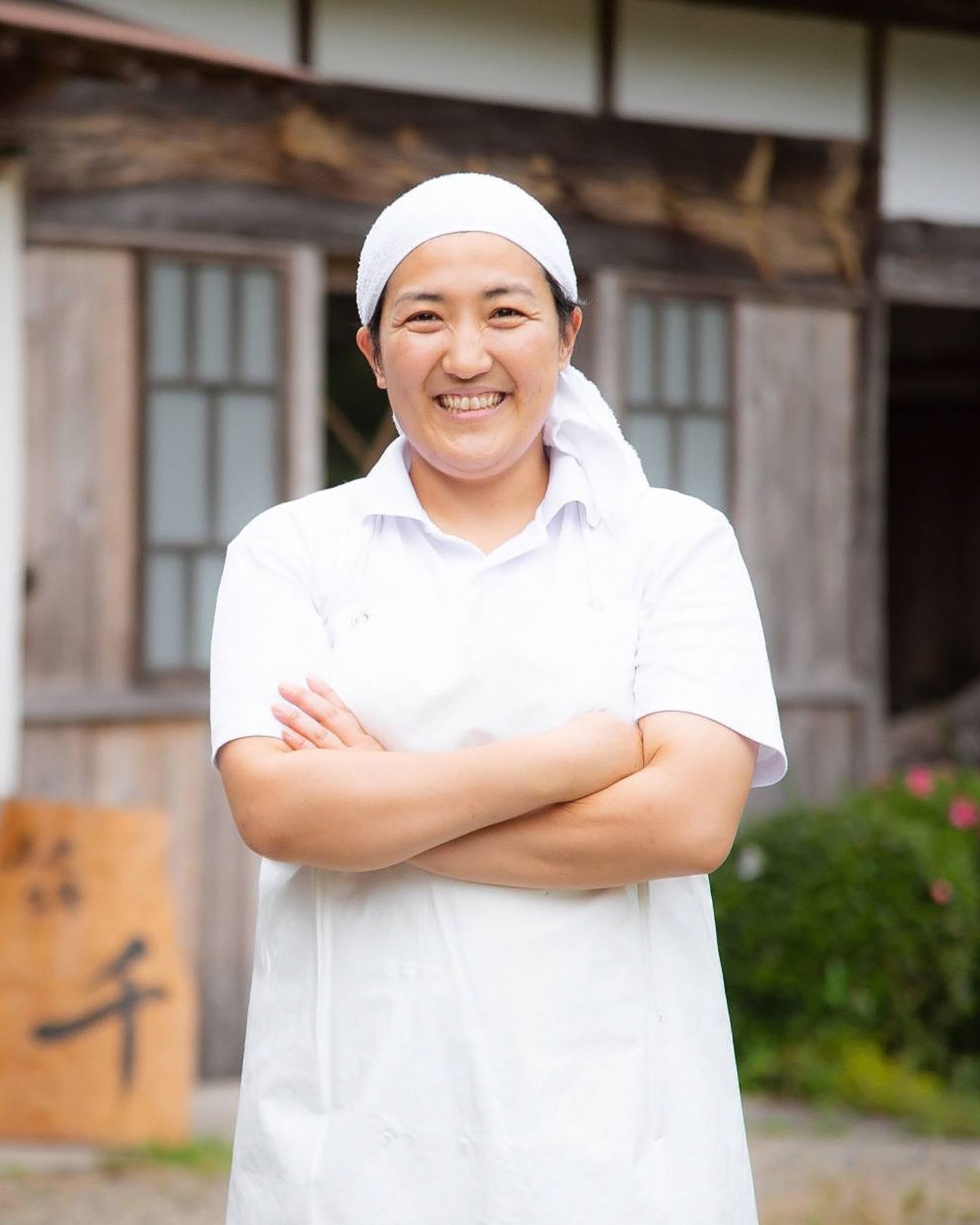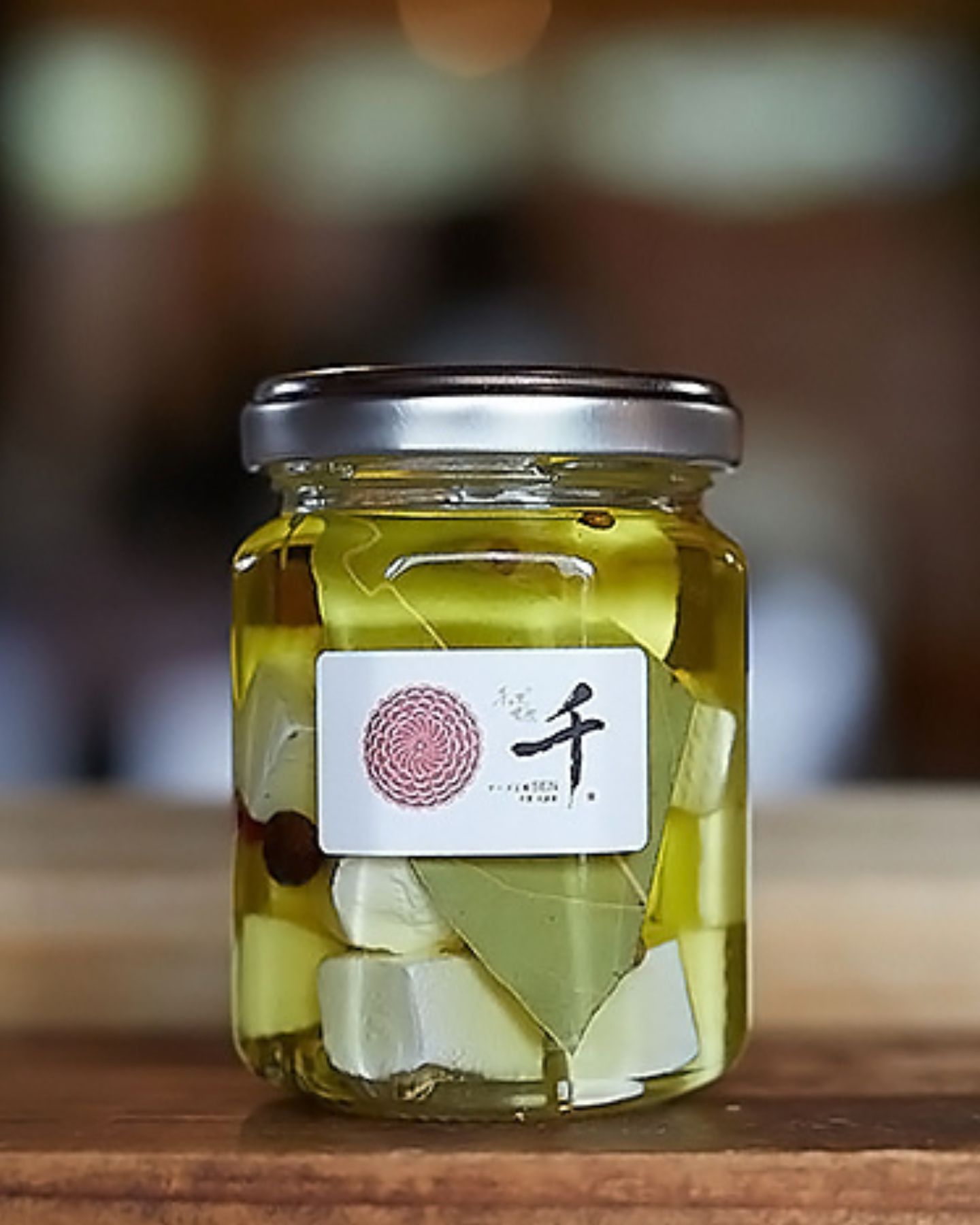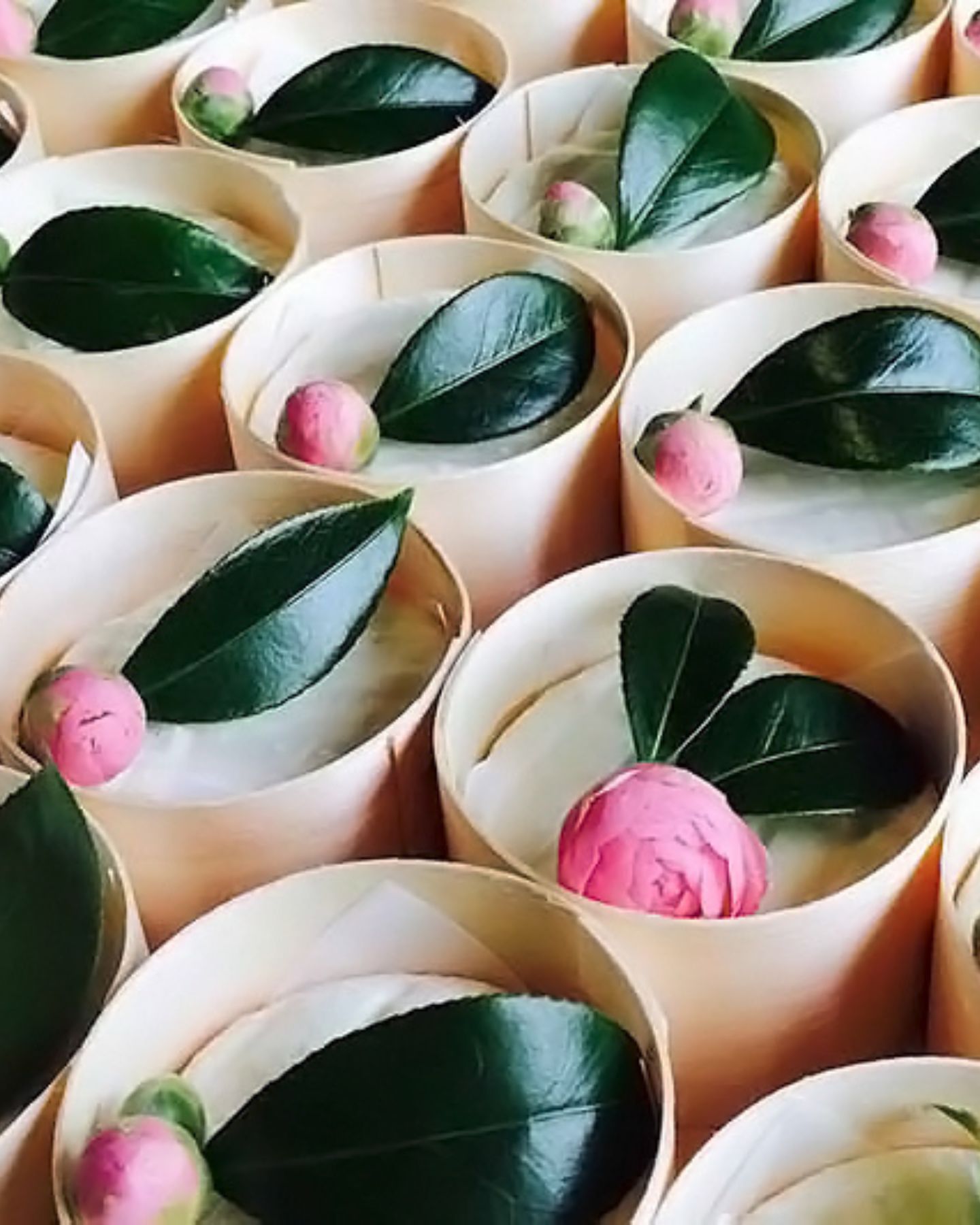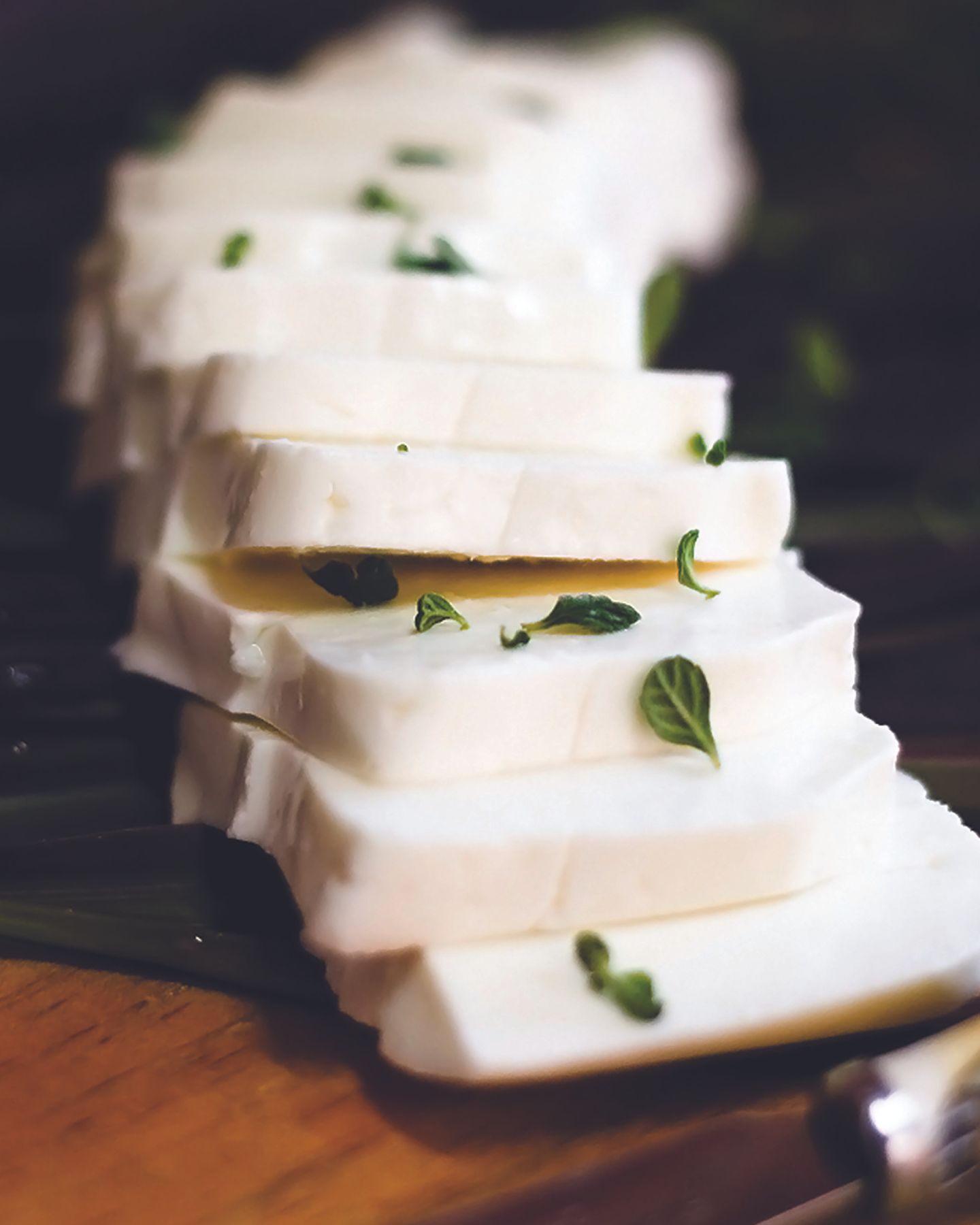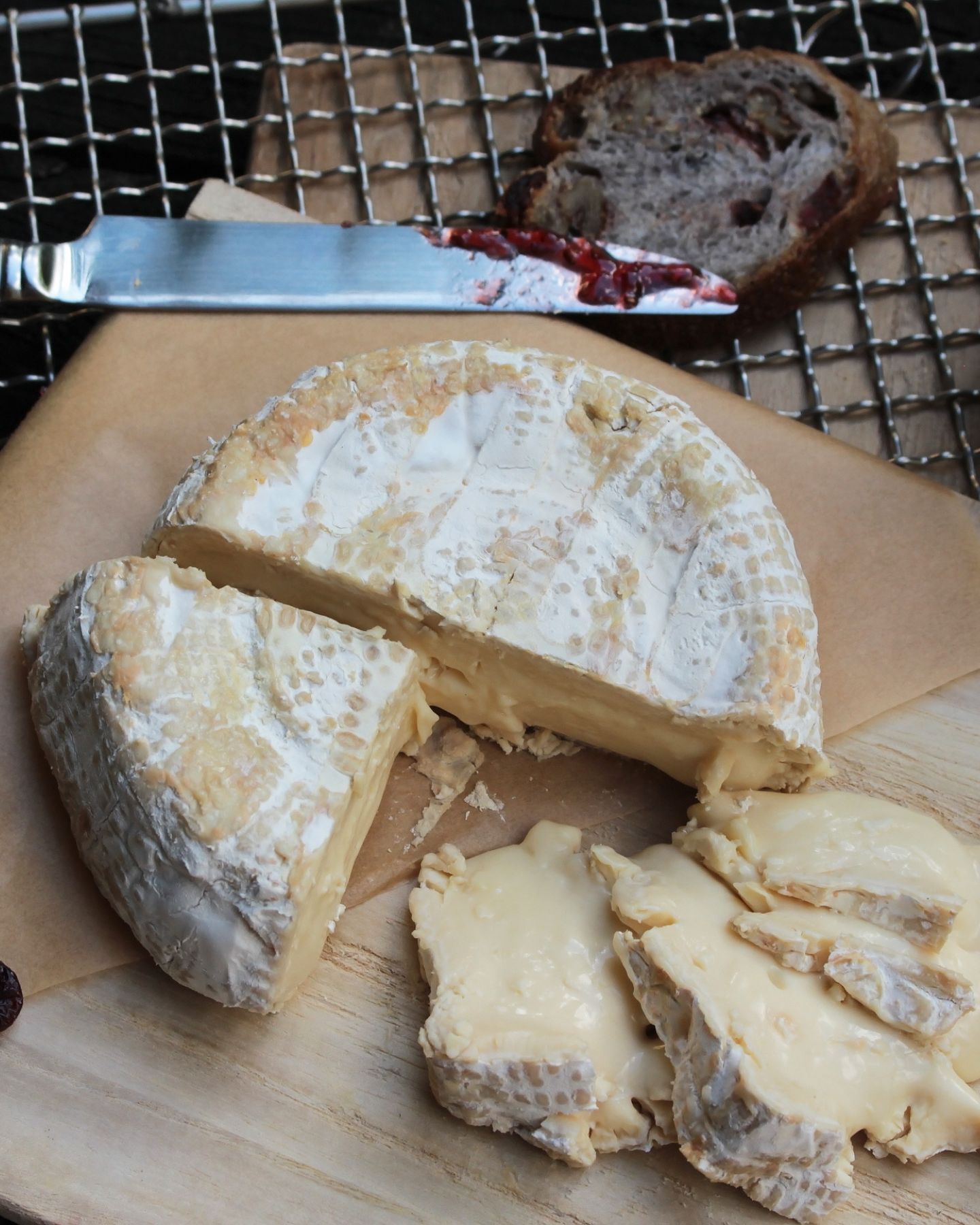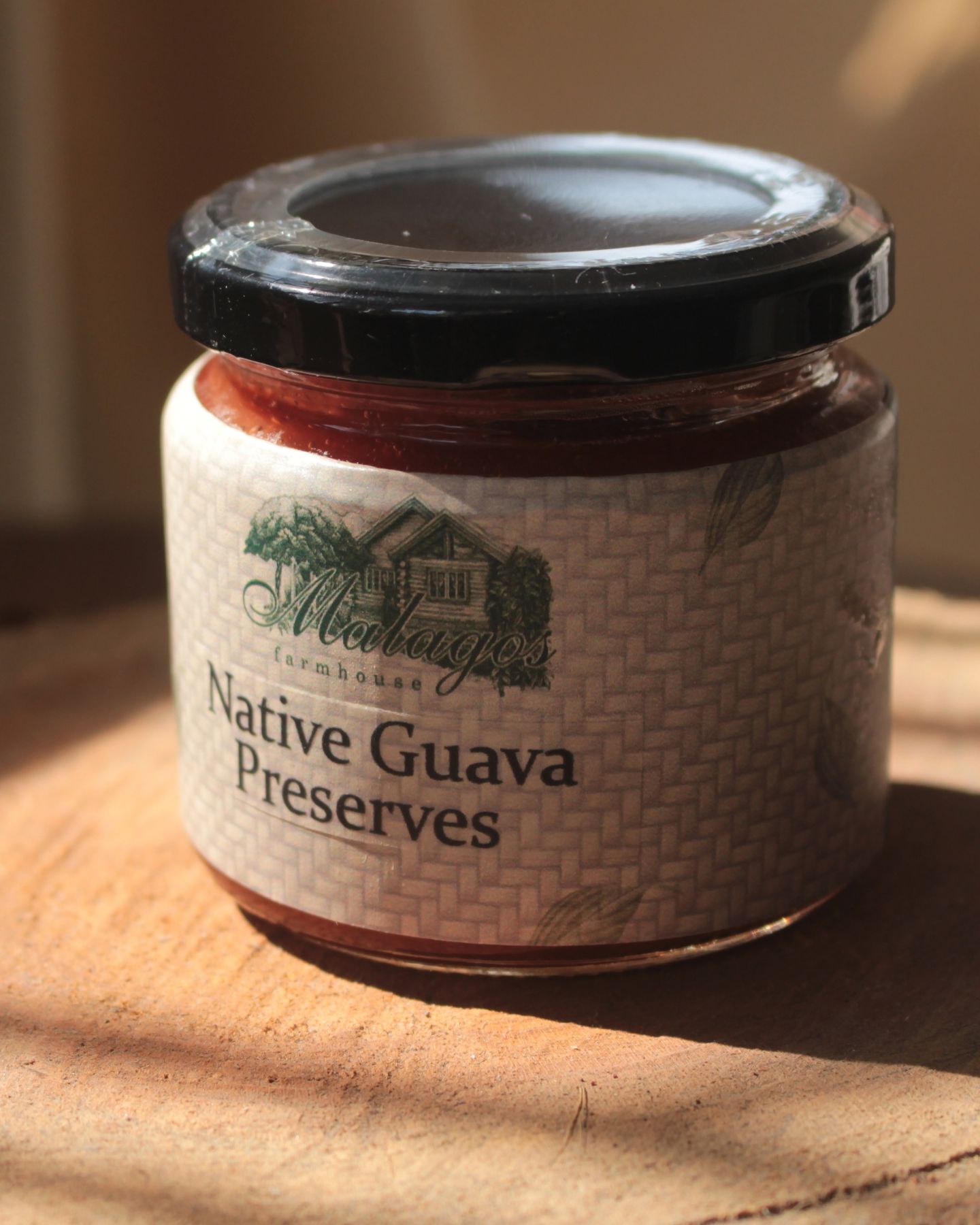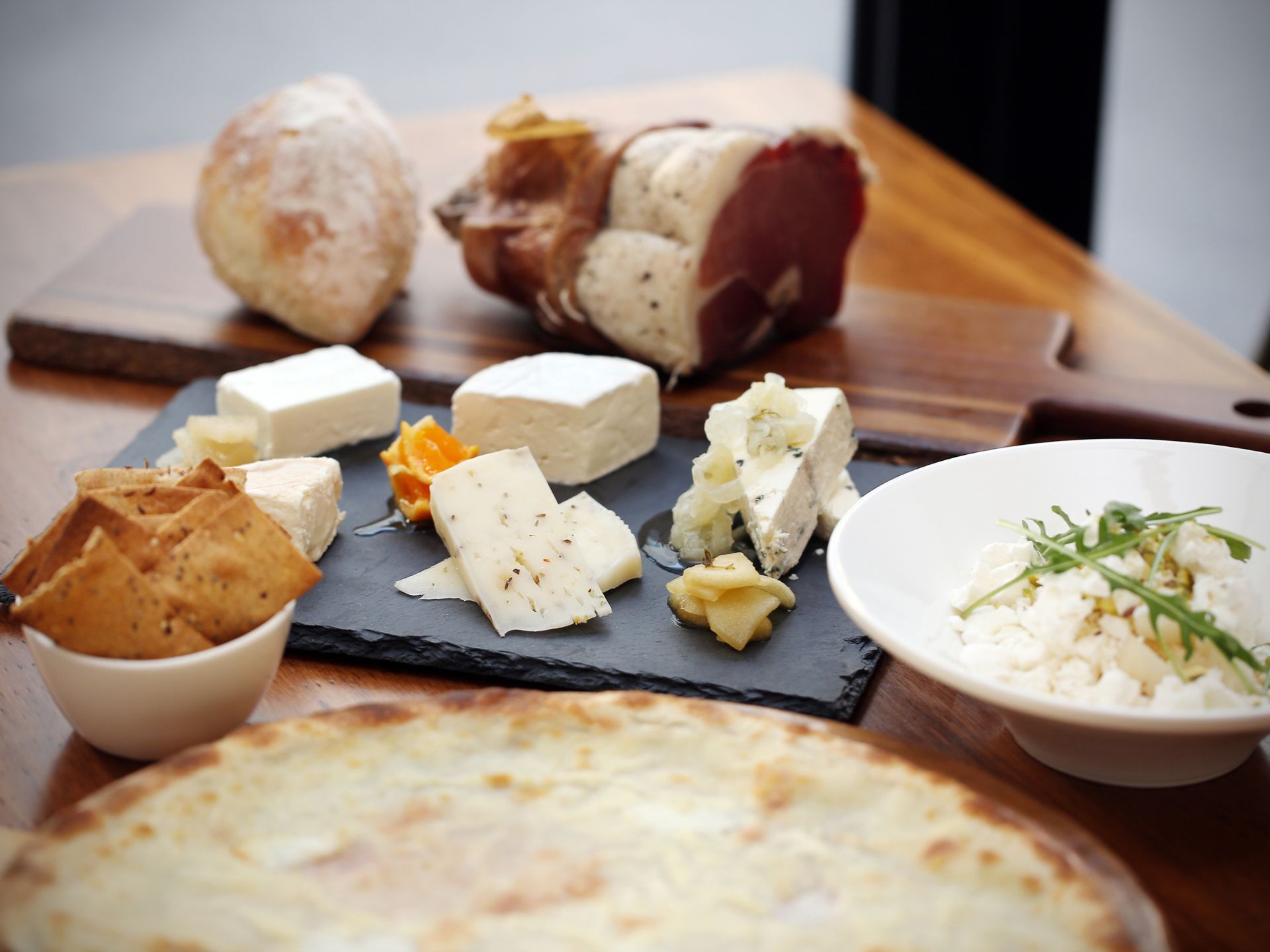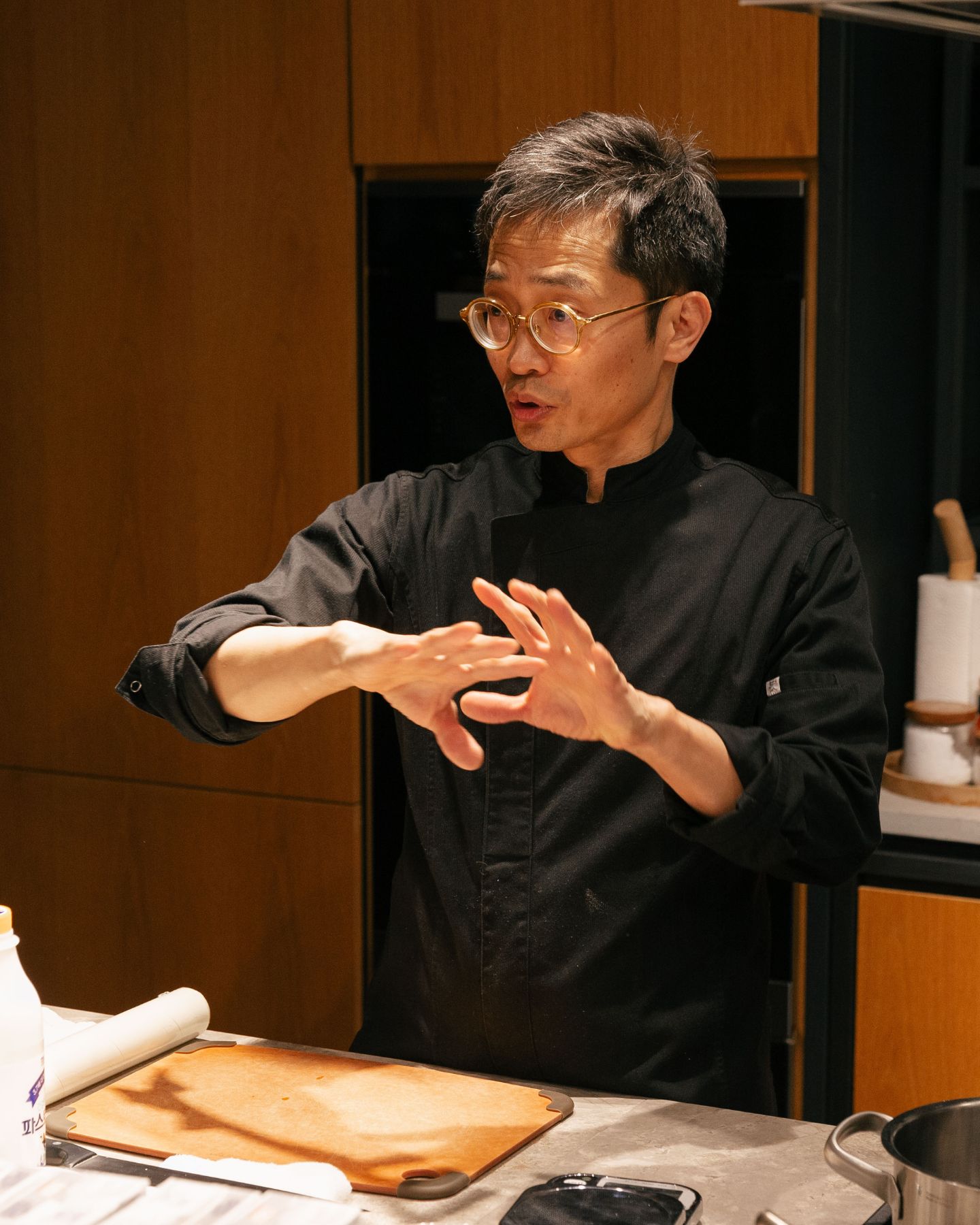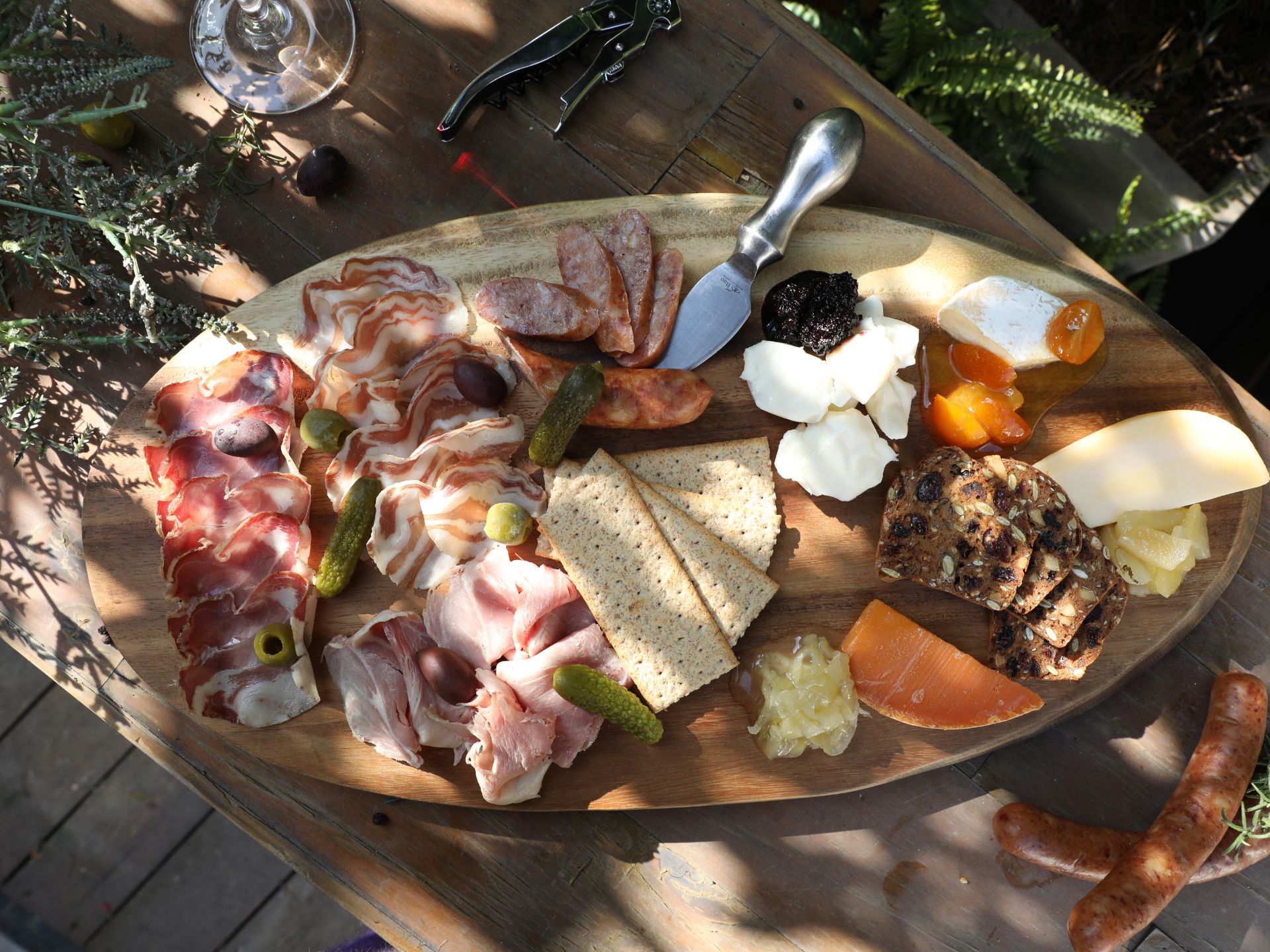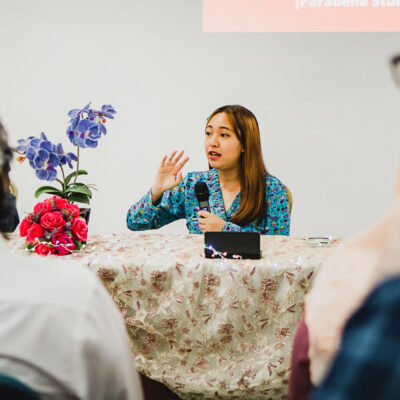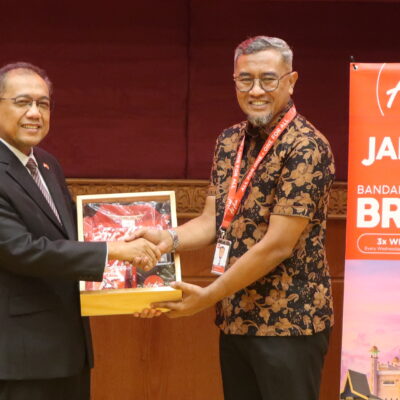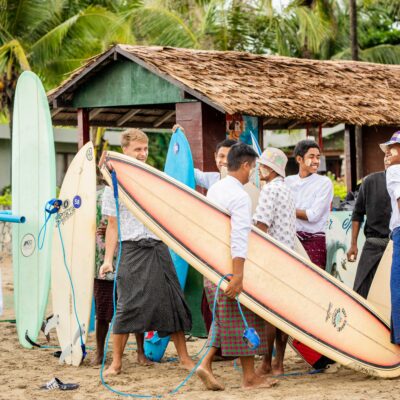by Jia Ying Chia
Across South East Asia there is a mushrooming community of artisans — crafters who have been quietly designing and perfecting products that originally had a niche market of consumers but are now finding widespread acceptance and increasing demand. Of all things one would imagine I am referring to; cheese is probably the unlikeliest answer. Although processed and milder styles like cream cheese have already gained acceptance with Asian palates, appreciation for the funkier stuff is still slow to catch on in Southeast Asian countries.
In a serendipitous twist of events, a VICE.com article dropped a shining nugget into my lap one fine day. A Chinese cheesemaker, trained in Corsica and handcrafting award-winning artisanal cheeses from local dairy sources? My brain mentally imploded, then reemerged with curiosity and the rationale that if Liu Yang of Beijing-based Fromager de Pekin was able to achieve such success in a craft quite alien to his culture then surely there must be others. This ultimately led me to a cornucopia of regional artisanal cheese makers who are not only revolutionising the way their communities consume cheese, but are creating new varieties that are putting their countries on the map.
Destination : Chennai, India
In the sprawling city scape of Chennai’s rapid development, lies an oasis of green where buffaloes, cows and various animals graze peacefully and unhurried by the concrete jungle that had been steadily growing towards and now, past their patch of green. Currently run by Shalini Phillips and her husband, Arul Futnani, ‘The Farm’ is in essence really more than that — a working farm with an onsite restaurant, organic vegetable garden, and astonishingly , a line of artisanal cheese that is truly ‘farm to table’.
While the local dairy industry enjoys a strong foothold on the market, industrial cheese (which is 80% added fat, mixed with stabilisers and emulsifiers) is still consumed the most in the country. Originally run as a dairy farm when it opened in 1974, the business made some milk by-products such as paneer, butter, cream and ghee. The couple pondered on the future of the farm when they took over from Arul’s parents in the 2000’s and saw that the formerly out of city borders would soon meet the rural area around them.
“Agriculture or being a dairy farm alone was not going to enable us to hold on to this piece of land as it is. So we thought about having a restaurant here, a farm shop eventually, and so on”, she explained. The popularity of the restaurant and a natural excess of buffalo and cow’s milk presented them with the opportunity and a chance meeting with a Canadian hobby cheesemaker of Indian origin has led to a lasting collaboration.
“We started making (buffalo) mozzarella in the ten days we were with him (and) haven’t stopped since. This year will be the 10th year actually of us being cheesemakers.”
Making their own cheese completed the slow food ethos that The Farm’s restaurant is based on, and even changed how customers perceived them.
“It’s not a thing to do in Chennai or India. There are more artisan makers in the country now but when we started it was unheard of that somebody was going to make cheese, and we find that we are the only farmstead cheesemakers in the country not buying milk from outside.”
Encouraging customers to try their 17 cheeses is a process of education and the pair are conscious to not produce types that are already popular, like cheddar.
“I think that’s slowly worked because today it doesn’t matter what we put on the cheese menu, people are happy to try it, which is great,” she explained adding that there are natural variations in the taste based on what the cattle are eating at a particular time of the year.
“We’re very proud of that, because that shows how real the cheese is.”
1/22, Semancheri Village, Old Mahabalipuram Road, Chennai 600119 | IG: @thefarmchennai | www.thefarmchennai.com
Destination: Kinarut, Sabah
When Australian Shelley Blew came to the Malaysia-Borneo state of Kota Kinabalu over three decades ago, the last thing she expected was to be still on the island in 2023 and running an artisanal cheesemaking business. Arguably the longest running (and at this point, perhaps the only) artisan cheesemaker in Borneo. Blew has been crafting cheese since 2007, she created her first products in a highly unusual setting — the boat shed of the Langkah Syabas Beach resort in Kinarut Beach, Sabah.
“You could not get any soft cheese in Sabah at that time,” explains Blew of what the cheese market was like back then.
A chance meeting with former Australian cheese makers staying at the resort, led her and the resort manager to take up the idea of attempting to make cheese by the beach. She eventually settled on recipes she was happy with and even caught the attention of large chain hotels and resorts in the area, who Kinarut Cheese still regularly supplies to this day.
“We’ve had a lot of ups and downs over the years.” she admits about making cheese in the tropics.
Temperature control humidity, maintaining extremely high standards of hygiene — these were just a few of the challenges Kinarut Cheese faced in their beginnings.
“Once that was all sorted, after six months and a lot of wasted milk and cheese, we then applied for our Halal Certification.”
Kinarut Cheese makes a relatively small amount of varieties to help ensure the quality of each product is kept up, especially since all the cheeses are handmade and contain zero additives and preservatives. They are a producer of raw milk cheese, and thankfully are able to source the milk from local dairies in the state of Sabah.
“As the cheese is a live product (with no preservatives), it gets stronger in taste so I only put a month’s shelf life on it after it is ripe, because then it becomes too strong for Asian taste buds,” Blew explained, adding that they also adjusted the salt content in the Feta to suit local customers. She favours a deep-fried Camembert herself, paired with sweet-tart cranberry sauce for dipping.
Thankfully, cheese consumption and the openness to trying different varieties is much better these days which she attributes to students trying more cheese overseas and then coming back to introduce it to their families.
20/0 Kinarut Mall, Kinarut, 89600 Papar, Sabah, Malaysia | IG: @kinarutcheese | Tel: 6011-31769
Destination: Chiang Mai, Thailand
Jarutat ‘Jart’ Snidwongse Na Ayuthaya started making cheese as a request from the late Prince Bhisadej Rajani, a former chairman of Thailand’s Royal Project Foundation, when he was just 25 years old. The Royal Project Foundation is a charitable organisation created in the 1960’s and personally funded by His Majesty King Bhumibol Adulyadej of Thailand, to tackle poverty, reliance on the opium trade, and deforestation in mountainous or remote communities. In between applying to the Royal Project Foundation and graduating from Monash University, Australia, Jart spent seven months in a forest monastery practicing deep meditation and contemplation techniques.
He produced the requested Mozzarella di bufala with success, and has not looked back since. While he admits he didn’t feel prepared to take on the task, approaching it with curiosity rather than intimidation helped him in spades.
“All of (what i learned as an industrial designer) gave me the ability to transform or reverse engineer food. It’s the same methodology — you;re just changing the raw materials and you have to learn how different types of food are created .”
He credits his unique ability to approach cheese making fearlessly to the skills he learned in his former roles.
“(Meditation) allows you to be really in focus in the details. You can also get wisdom out of yourself when you look into your heart and focus on certain feelings, emotions, whatever it is. You can kind of apply that technique to anything you do, especially with food which is a high contact product composed of many little nuances of sensory qualities.”
Jartisann Cheeserie currently makes 12 to 13 local varieties, all of which have earned rave reviews from customers but tells me that this SyamisBlue variety took the longest to perfect. He called the process “super challenging” but can happily say it, and his other cheeses, is now something worthy of standing amongst the great blues from around the world.
As a former rising pop star in Thailand, (which comes at almost no surprise since he his a polymath; Jart also is a master bread maker amongst other things) he also has passion for the arts and music and likens designing cheese to internalising a character as an actor. His early periods of cheesemaking were like “learning to cover other people’s music in the early years”, before you can start to make your own music. I ask him which song or album best defines that ‘adolescent’ period.
“I kind of like the Jamiroquai! In a sense they’re kind of funky, kind of groovy, there’s jazz,” he answers with a laugh. “A lot of their songs came from jamming sessions but they’re all very technical high-level performers. You have to understand enough physics, chemistry and biology, and mathematics, and at the same time use that knowledge to create in artistic ways. Like what song can you create from 12 jamming instruments together.”
242 st.4B, Soi 1 Wangtan Village Moo 3 Sanpakwan, Hang Dong District, Chiang Mai 50230, Thailand | IG: @jartisann
Destination: Kuala Lumpur, Malaysia
Concerned by the numerous additives and preservatives in commercial cheese production, Dexter Lim started making his own for his kids to consume. The former property investor decided to leave the industry after 13 years, to turn his hobby into a full-time source of income during COVID.
“I started playing with cheese at home in 2019, when i discovered cheese has a history that dates back 7,200 years. It had always been made in someone’s kitchen. So, I figured why not in my house,” he said. His milk supplier was also having problems selling off his milk during the pandemic which further spurred Dexter to create a business out of his cheesemaking.
D’artisan Cheese has amassed a huge variety of products in the short time he has been crafting cheeses — Willy Wonka-esque in the way he approached flavour combinations — and shows no signs of slowing down. He’s currently in the midst of completing his 151st cheese variety, he tells me chuckling. “At any given time, you’re probably looking at around 100 or more different types of hard cheese (in production). My staff help me keep track of things.”
In the heart of the bustling Kuala Lumpur metropole, Dexter has somehow defied the odds of traditional cheese making. He acknowledged that getting consistent volumes of good quality milk was challenging at the start. They work with boutique farms who organically feed their cows, and he is using raw unpasteurized milk meaning the milk needs to be of extremely high quality.
“Malaysia is not known for cheese making, so we needed to DIY most of our equipment since it can’t be bought off from the shelf. For cheese making, the ideal room temperature is 10++ °c, but in Malaysia you’re probably looking at 20++ to 30++ °C.”
Dexter’s fondess for blue cheese and blue cheese strains means you will find a huge variety of produce infused with the Penicillium mold such as the Brie and Camembert which are available infused with the familiar blue hue of this variety. “I just like exploring and playing with cheese! I love blue cheese. It’s just a personal preference as blue cheese cultures elevate the cheese to a whole new level!”.
The Truly Malaysia series that he has created is a melee of Southeast Asian flavours and then some . There is the ‘Nasi Lemak’, which is an Asiago infused with lemongrass, organic coconut cream and biji halwa (fenugreek), and Jengkol Cheddar, which contains the crushed seeds of the Jengkol plant, lots of spicy chilli and garlic. Not to mention the gorgeous ethereal Kerabu cheese that counts torch ginger flower, citronelle and butterfly pea flower as ingredients. Is there anything that can’t be cheesed, I ponder. For Dexter it certainly seems not.
“I’m exploring more Asian flavours this year,” he says in answer, rattling off Japanese Curry, Thai Curry and Nonya as possisble trials to be attempted, adding that he is also exploring a ‘super spicy’ series. “I recently made a Habanera-infused cheese and am waiting for it to mature. I’m also looking to incorporate durian into hard cheese. It’s a little more challenging as I need to make sure it’ll not accidentally intriduce bad mold into it.”
With more Malaysians opening up to the artisanal products, Dexter hopes to continue feeding his wildest cheese dreams to his family and customers.
26, Jalan Gangsa SD5/3b, Bandar Sri Damansara, 5200 Kuala Lumpur, Selangor, Malaysia | IG:@artisancheesewithdex | www.dartisancheese.com
Destination: Otaki, Japan
As a trained microbiologist, Chiyo Shibata is used to focusing on the small things. Her dreams of becoming a cheesemaker, however, were far from small. From early on, she strived to develop world-class cheeses that were not just ‘Made in Japan’, but ones that truly represented its unique terroir. According to Shibata, she began her love affair during summer holidays to France and was particularly impressed by the delicious cheese she ate at Roquefort (world renowned for its blue cheese) in the South of France. Her ‘big break’ came when she was working in a government food safety lab and came across dried fish maker Koshida Shouten’s 50 year old brine, which was rich with lactobacilli bacteria, naturally present in most nutrient rich environments like fermented drinks, yoghurt and cheese.
Homes in an old renovated farmhouse in the Chiba prefecture, her cheese factory Fromage Sen is a representation of her meticulous attention to detail and holistic, at times spiritual, approach to crafting cheese. She believes in creating a localised product that start with the domestic production of microbes, to create produce unique to the island nation. This commitment has earned her multiple accolades including the Japan Cheese and World Cheese awards. “(My cheeses) features a fragrance that you have never tasted with European cheese,” Shibata said adding that she thinks there are cheeses which can only be created in the climate of Japan, noting that their compatibility with Japanese Sake is outstandingly good.
“The aroma is mainly derived from the action of yeast, which is controlled by the content and quality of minerals,” she explains. This, she adds, is why she uses ingredients like traditionally made natural salt from the Iwato Salt Studio. Fromage Sen also operated as a channel through which Shibata can achieve that things she would like to focus on once she is ready to leave cheesemaking world behind. “We are working on creating and supporting an economic system that involves the region, and plays a role in connecting people and communities through cheese.” She says that she would like “to open a small school to convey to children that importance of food and gratitude for life. We donate to support the independence of the homeless through The Big Issue Fund; we process whey, which is water content in cheese production into dressings to sell them together with welfare establishments. I’d also like to do more collaboration with musicians”.
Artisanal cheese is becoming popular in Japan with almost 300 individual makers across the country to date, but it still remains relatively unbalanced in terms of female participation. Shibata would like the number to increase and admits that in terms of breaking stereotypes, she had “a fixed idea” about it. “You can’t compete with large cheeses that require a lot of force like a male craftsman but if it’s cheese that you can hold in the palm of your hand, there are plenty of possibilities for women craftsmen. The important thing is that the cheese is delicious, expresses its own character and is beautiful.”
178 Babauchi, Otaki-cho, Isumi-gun, Chiba Prefecture, Japan 298-0231 | IG: @fromage_sen | www.fromage-sen.com
Destination: Davao City, The Philippines
In the wake of needing a solution to her husband’s growing goat problem on the family-owned farm, Olive Puentespina accidentally became a cheesemaker and artisan crafter. Her pursuit for learning has brought her to different places, and connected her to passionate craftspeople who share her willingness to achieve the quality and standards needed for Malagos Farmhouse to reach local and international recognition.
Davao City sits on the eastern edge of the Southern Philippines island of Mindanao, as the third most populous city of the country. In the broader scope of things, it seems unlikely that cheese could be well made here but she was undeterred . After deciding to pursue goat milk production in lieu of slaughtering, the next question for Olive was preservation. She turned to a former colleague from the Dairy Training and Research Institute of the University of the Philippines who taught her to make feta cheese. According to Olive, there are not very distinct seasons that can grossly affect the taste of the animal’s forage and they practice using multiple sources to influence the milk’s richness.
In 2006, her cheese was not only accepted by the Cheese Club of the Philippines but won the Cheese of the Month award. Spurred by the initial success, Olive says that she “never stopped imagining, trying and perfecting 27 protocols for cheese, made in the Philippines”. Acceptability came slow however, she admits, as the Philippines does not have a cheese culture (like most Asian countries) but with the increased accessibility to global travel and information sharing, more and more Filipinos were introduced to the world of cheese. “I guess I came in at an opportune time. Dedication to the craft also came through in the products. We started offering them to international hotel and restaurant chains and the appreciation of the chefs was astonishing.” she shared, adding that once those doors has been opened “the challenge on maintaining and improving the quality, quantity and acceptability, was real and we never looked back. We trained, increased milk production, we travelled , we collaborated and the rest, as they say, is history.”
This willingness to learn and collaborate can be traced back to the Puentespina’s strong family ties. Olive is very clear that the success behind Malagos Farmhouse lies in the community of family and friends they have entertained over lunch at their family home. “here you will hear a lively exchange of great ideas and arguments being settled, all with respect and in the name of good, clean fun.” On her ideal cheese themed lunch date, she said that she’d have loved for her later mother to taste and enjoy the Malagos cheeses, which are best served as an antipasti course with Philippine fruit jams and preserves. “She was the most selfless, creative and loving person I know and her kindness was legendary, a trait we practice as a culture in the company. She also gave her kids the first taste of Queso de Bola (Edam), a Christmas cheese, while we were young.”
Puentespina Compound, Bolcan Street, Agdao, Davao City, Philippines 8000 | IG: @malagosfarmhouse | www.malagosfarmhouse.com
Destination: Seoul, South Korea
Anthony Cho Jang-hyun dreamt of becoming a successful chef after quitting his white-collar job when he was 36 years old. He enrolled to the London branch of the Le Cordon Bleu institute in 2002, and returned to South Korea to open two restaurants — French fine dining establishment, Kitchen Flo and gastropub, Chez Flo, both located in Seoul. His passion for cheesemaking developed a decade after and he began his quest for knowledge, travelling the globe to learn from esteemed craftspeople such as cheesemaking Neil Wilman in New Zealand, salumi from Massimo Spigaroli in Italy and taking charcuterie lessons at ‘Kitchen at Camont’ in France. His craft at Cheese Flo is a reflection of the skills learned and his own developments on the art of preservation and fermentation.
Chef Che says he “could not imagine, and did not plan” to delve into cheesemaking or charcuterie — his main interest was to have a successful restaurant and be a good chef. “in 2008, (Kitchen Flo) was affected by the economic crisis and there were new dining trends such as brunch, gastropub and Korean-style fine dining. Such kinds of trend changes will continue endlessly. That’s why I was thinking of not changing, slow changing and sustainability.” Trends may be fleeting but the global love for cheese is eternal, he thinks. He tells me that he s challenging himself to reach the highest quality of products through dedication to the craft.
At the moment , Cho maintains smaller batches with the observation that it would require investment and creating the appropriate channels to achieve large scale production. “The dairy industry in Korea is also facing structural issues ; the cost of milk production is too high making it difficult to compete with imported products. It won’t be easy in the short term due to vested business interest. Every step forward is a big challenge and I might fail,” he admits but says that he believes he is “going the right way and it is a matter of time and devotion.”
The only way to the top is possibly by developing unique ‘Korean’ cheese varieties, for this intrepid artisan. His current line certainly reflects his French and European influence, will elegant combinations like the truffle brie stuffed with mascarpone and truffle pesto, and the ‘Italeggio Taleggio‘ which is described as being made ‘in the style of Cheese Flo’. Cho says that use of local microbes like the ones present in Doenjang (fermented soybean paste) could be possible to capture the essence of Korean-made cheese. He is also experimenting with washing his rind cheeses in traditional Korean liquor in the same way that the French brandy Marc de Bourgogne is used to affect the flavour and the smell of Époisses, a pungent soft-paste cheese. There might be many possibilities for pairing with Korean ingredients he admits, adding “it makes me happy to find new combinations.”
Fermentation and maturing developed in such a way that the same scientific principles have been adopted by each country and culture to create vast differences in the way the East and West preserve food. According to Chef Cho, “the invisible world rules the visible world; microbes are invisible but they start to act in certain conditions and they are connected with the macro world through culture, history, politics, economics, climate, geography and so on.”


